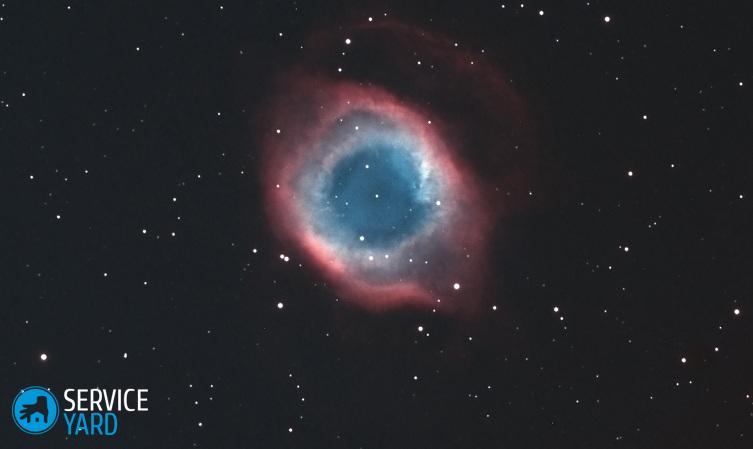How to choose a telescope?
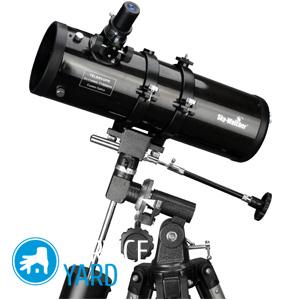
It is incredibly interesting to watch the beauty of celestial bodies, especially at night, when stars, planets and various galaxies are open to the eye. If you want to join those who love astronomy and see all the stars, then you need to purchase a telescope. Where to begin? How to choose a telescope for beginners? To do this, you do not need so much - a suitable optical device, a map of the starry sky and crazy interest in this mysterious science. Today you will learn what a telescope is, consider its varieties, what parameters you should pay attention to when choosing a device that will open for you a world of bright stars and constellations.
to contents ↑Main questions
How to choose a telescope? Before buying a telescope, try to understand what you want to get from this acquisition. We recommend that you make a list of questions and try to answer them before heading to the store. The following questions need to be answered:
- What objects do you want to see in the sky?
- Where do you plan to use the device - at home or on the street?
- Do you want to do astrophotography in the future?
- How much are you willing to spend on your hobby?
- What kind of heavenly bodies would you like to watch - the nearest planets of the solar system or the farthest galaxies and nebulae?
It is very important to give the right answer to these questions. The device costs a lot of money, and you need to choose the right model to buy a telescope that fully meets your experience and personal preferences.
to contents ↑The principle of operation and the device of the telescope
Such an optical device is a rather complex device, thanks to which you can see even the most distant objects (terrestrial or astronomical) in multiple magnifying glass. Its construction consists of a pipe, where at one end (closer to the sky) a light-collecting lens or a concave mirror - a lens is built-in. On the other, there is the so-called eyepiece, through which we view a distant image. We’ll talk about which telescope is better a bit later.
The design of the telescope is equipped with such additional equipment:
- A search engine for detecting given astronomical objects.
- Light filters that block the strong radiance of celestial bodies.
- Correction plates or diagonal mirrors that can rotate the visible image that the lens transmits “upside down”.
Professional telescopes that are equipped with astrophotography and video capabilities can be equipped with the following equipment:
- GPS search system.
- Sophisticated electronic equipment.
- Electric motor
Varieties of telescopes
Now we will acquaint you with the main types of optical devices, which are different among themselves by type of design, the presence of components and additional elements.
Refractors (lens)
This type of telescope is easily recognizable by its rather simple design, which resembles a telescope. The lens and the eyepiece are located on one axis, and the magnifying object is transmitted along the direct spectrum - just like in the very first telescopes produced many years ago.
Such refractive optical devices can collect reflected light from celestial objects using 2-5 magnifying-convex lenses located at two ends of a long pipe of the structure.
How to choose a telescope for an astrologer?
The lens unit is perfect for beginners to observe the life of celestial objects. Lens telescopes allow a good view of both terrestrial and celestial objects that extend beyond our solar system. When using the refractor telescope, you can notice that when the light is caught by the lens, the clarity of the image may be lost, and with multiple magnification, you can observe slightly blurry objects.
Important! It is better to use such a device in an open area, ideally in a country where there is no illumination of the sky by extraneous rays.
Advantages:
- Easy to use and do not require additional expensive maintenance.
- The tight design of the device protects the device from dust and moisture.
- Temperature resistant
- They can give a clear and vivid picture of nearby astronomical objects.
- They have a long service life.
Disadvantages:
- Very dimensional and heavy (the weight of some telescopes reaches 20 kg).
- The maximum diameter of a magnifying lens is 150 mm.
- Not suitable for urban observation.
Depending on the type of optical lenses, telescopes are divided into the following types:
- Achromatic - equipped with small and medium optical magnification, but show a flat picture.
- Apochromatic - they give out a convex image, but they eliminate defects of a fuzzy contour and the appearance of a secondary light spectrum.
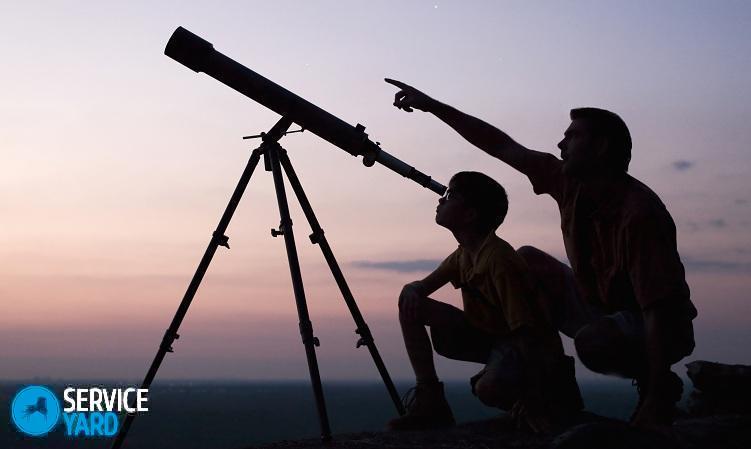
Reflectors (Mirror)
How to choose a telescope for observations? The work of such a telescope is to capture and transmit a light beam using two concave mirrors: the first is inside the tube, the second refracts the image at an angle, directing it to the side lens.
Unlike the reflex apparatus, such a telescope can study the deep region of space and get a better image of distant galaxies. Since mirrors are cheaper than lenses, the price will be corresponding - low.
Important! It will not be easy for a novice user to manage the complex technical settings and adjustments of such a telescope. That is why we recommend that you first practice on the reflector, and later switch to a higher professional level.
Pros:
- The simplicity of the design of the telescope.
- Compact size and light weight.
- It picks up the subdued light of the most distant space objects.
- The large diameter of the magnifying aperture (from 250-400 mm), which transmit a more contrasting and bright picture, without any defects.
- Reasonable price compared to expensive refractors
Minuses:
- It requires special experience and time to configure the optical system.
- Particles of dust and dirt can get inside the structure.
- He does not like temperature changes.
- Not suitable for viewing the ground and nearby objects of the solar system.
Catadioptrics (mirror lens)
Lenses and mirrors are the constituent elements of a catadioptric telescope lens. This unit includes all the advantages and maximally corrects defects using special plates. With this device, you can not only get the clearest picture of the near and far celestial bodies, but also make high-quality photographs of the seen object.
Pros:
- Small size and transportability.
- They transmit the highest quality image of all existing telescopes.
- Equipped with aperture up to 400 mm.
Minuses:
- Expensive.
- Accumulation of air inside a telescopic pipe.
- Sophisticated design and management.
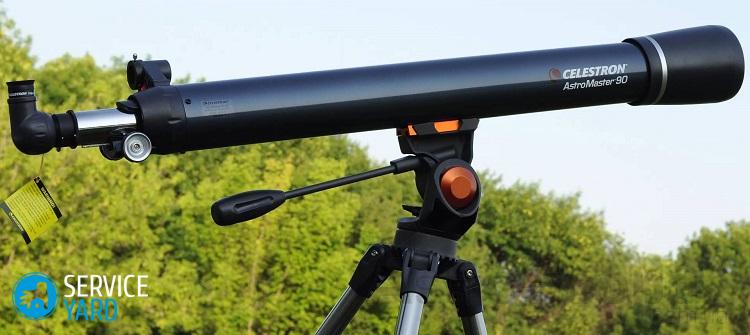
Telescope selection options
It's time to consider the main characteristics of modern optical instruments in order to understand how to choose a telescope for beginners and beyond.
Aperture (lens diameter)
It is the main criterion for choosing any telescope. The ability of a mirror or lens to capture light depends on the aperture of the lens: the higher this characteristic, the more reflected rays will fall into the lens.Thanks to this, you can see a high-quality image and even catch the faint visibility of the most distant space objects.
When choosing an aperture, based on your goals, focus on the following numbers:
- To see the clear details of the image of nearby planets or satellites, a telescope with a diameter of up to 150 mm is enough. For urban conditions, this figure can be reduced to 70–90 mm.
- A device with an aperture of more than 200 mm can see more distant celestial objects.
- If you want to see the near and far celestial bodies outside the city, then you can try the largest amount of optical lenses - up to 400 mm.
Focal length
The distance from the celestial bodies to the point in the eyepiece is called the focal length. It is here that all the light rays form a beam of a single glow. This indicator dictates the degree of increase and clarity of the visible picture - the higher it is, the better we will see the heavenly star that interests us. The higher the focus, the longer the telescope itself, therefore, such dimensions can affect the compactness of its storage and transportation.
Important! A short-focus device can be kept at home, but a long-focus device can be kept in a more spacious room, for example, in the courtyard of a house or in a country house.
Magnification factor
This indicator is easy to determine by dividing the focal length by the characteristic of your eyepiece. So, if the diameter of the telescope is 800 mm, and on the eyepiece it is 16, then you can get a 50x optical zoom.
Important! If you install a weaker or more powerful eyepiece, you can independently adjust the magnification of various objects.
Today, manufacturers offer a variety of optics - from the lowest (4–40 mm) to the highest, which can double the focus of the optical device.
Mount Type
This is nothing but a telescope stand. Its intended purpose is the ease of use of the telescope.
Amateur and semi-professional set consists of 3 main types of such movable supports:
- Azimuthal - a fairly simple stand that shifts the device horizontally and vertically. Refractors and catadioptrics complete this support. The azimuthal mount is not suitable for astrophotography, since it is not able to catch a clear image of the object.
- Equatorial - has an impressive weight and dimensions, but it perfectly finds the right luminary according to the given coordinates. This type of mount is suitable for reflectors that capture the most distant galaxies. Equatorial support is very popular among astrophotography enthusiasts.
- The Domson system is a cross between a regular low-cost azimuthal stand and a robust equatorial design. Very often it is added to a complete set with powerful reflectors.
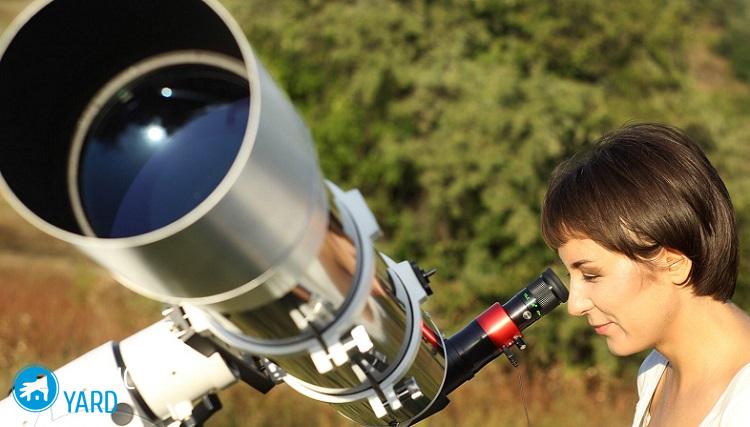
Recommendations:
- Do not overpay for the dimensions of the telescope. It must be such that you can carry and transport it yourself. The best telescope for the home should be as compact and comfortable as possible.
- If you will be transporting the device in a car, you need to make sure that the dimensions of the pipe allow you to place it in the cabin or in the trunk. Otherwise, you will have to repair not only the telescope, but also your truck.
- Select a place in advance to view celestial objects. The best option would be a place that is located outside the city. If you do not have transport, then stop at the nearest observation deck with the absence of the nearest housing estates and other buildings.
- If you are a beginner, then do not immediately spend the entire accumulated budget. The purchase of eyepieces, powerful filters and other equipment is a very expensive process.
- Try to watch the celestial bodies as often as possible. So, if you use the telescope every day and look at the same objects, then over time you can see their new changes and movements.
- If your goal is to study the farthest galaxies and nebulae, then buy a reflector with a diameter of 250 mm, complemented by an azimuthal stand.
- Fans of astrophotography can not do without a catadioptric optical device with a powerful aperture (400 mm) and the longest focusing from 1000 mm. You can add an equatorial mount with automatic drive to the kit.
- You can give your child a budget and easy-to-use telescope-refractor from the children's series, equipped with an aperture of 70 mm on the azimuthal support. And an additional adapter will help make spectacular photos of the moon and ground objects.
Stock footage
We really hope that after reading our article, you will become an expert in the field of telescopy, and choosing a good telescope for your home will not be a problem for you. Watching the moon, stars, planets, galaxies, interesting nebulae is extremely exciting and extremely interesting! We wish you new discoveries and long service of your telescope!
- How to choose a vacuum cleaner taking into account the characteristics of the house and coatings?
- What to look for when choosing a water delivery
- How to quickly create comfort at home - tips for housewives
- How to choose the perfect TV - useful tips
- What to look for when choosing blinds
- What should be running shoes?
- What useful things can you buy in a hardware store
- Iphone 11 pro max review
- Than iPhone is better than Android smartphones



